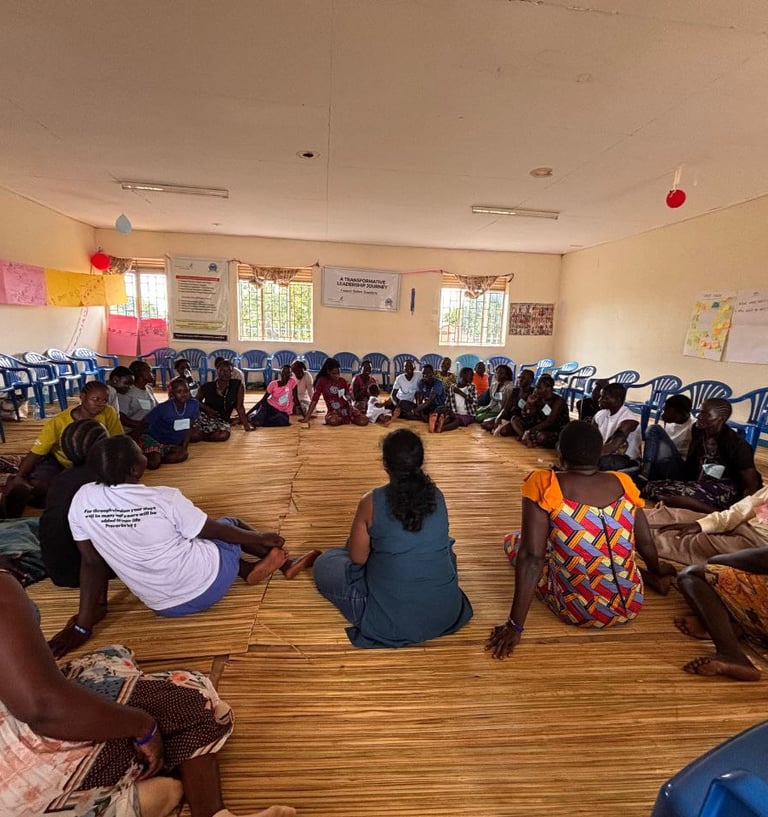Our Story & unique preposition
Where Connection Becomes the Catalyst for Change
System change framework
We noticed that many leadership-programmes focus on skills training—public speaking, strategy, management. While these are valuable, too few address the deeper patterns: how people see themselves, how relationships are built, how trust is formed, and how systemic barriers persist. We believe that transformative leadership is rooted not just in what you do, but in how you are. That means shifting mindsets, repairing relationships, identifying leverage points and designing interventions that ripple outward.
What sets us apart:
We deliberately work at the convergence of personal healing + leadership development + systemic change.
We bring survivors, women, children and professionals into the same ecosystem (with tailored pathways) so cross-learning and mutual empowerment happen.
We are lean and strategic: we don’t chase every programme, we target the leverage points first so the impact lasts and expands.
We embed local ownership: we build local facilitators, champions, networks so that change multiplies and sustains after we exit.
Imagine a world where every person—no matter their past, role or identity—takes up the mantle of change. Where a mother who has survived trauma uses her voice to heal her community; a young person steps into leadership rather than simply waiting; a professional redesigns structures so others aren’t held back; a child is empowered to connect, bond and lead. This is what transformative leadership means. It’s about shifting patterns, building relationships, forging connections , and changing the system from within. It’s leadership that includes us all.
Reimagining Leadership Through Relationships and Trust
What it means in practice
Seeing the system — and your place in it






Transformative leaders lean into systems thinking: they map out actors, relationships, power structures, norms and behaviours. They ask: What’s keeping this pattern going? Where are the feedback loops? For example, as recent research shows, systems-leaders must begin with a holistic view of the challenge, not just a siloed sector approach.
Shifting mindsets, relationships & flows of powers
Systems change rests not only on new policies but on renewed relationships, trust and mindsets. A core insight from systems-leadership research is that leaders must “detect patterns and relationships to leverage or disrupt” within the system. We work with participants to shift how they see themselves, others and the systems around them.
Identifying leverage points
Rather than doing more of the same, we help identify small strategic shifts that can trigger big impact. In systems change literature, this is often described as targeting leverage points: those places where a change of behaviour, norm or relationship can re-wire the system.






Building networks and collective action
Learning, adapting and sustaining
Sharing Power
No one leader or organisation can change a system alone. Effective systems leadership involves building coalitions, engaging diverse stakeholders and working across boundaries. For example, the “CLEAR” framework for systems change begins with convening diverse actors and committing together.
Systems aren’t static—they evolve, resist change, and sometimes shift unexpectedly. Transformative leadership within this framework acknowledges complexity, embraces learning, and adjusts as we go. As one article notes: “systems-change efforts … involve high transaction costs, ambiguous outcomes and long timeframes.”
Leadership that transforms systems pays attention to power: not hoarding it, but distributing it where it matters. Research highlights that sharing power — relinquishing control, creating space for others to lead, and redistributing decision-making — enables broader ownership, trust and sustainable change.
Reimagining Leadership Through Relationships and Trust
At Thrive Change Lab we choose to emphasise the relational and transformational dimensions of leadership and change. Rather than focusing primarily on structural reform, we focus on shifting how people see themselves, how they relate to each other, how trust and agency are rebuilt—and from those changes we see structural and systemic transformation follow. By working at the levels of mindset, relationship and connection, we believe true systems change becomes possible and enduring.